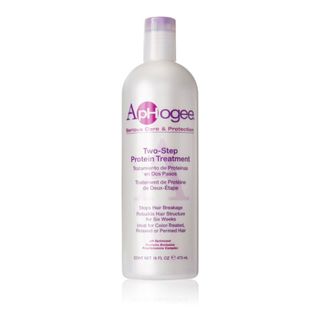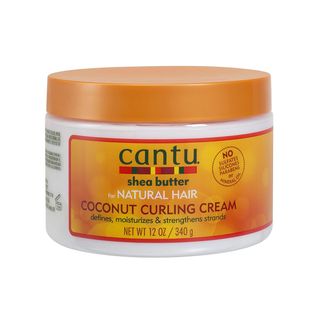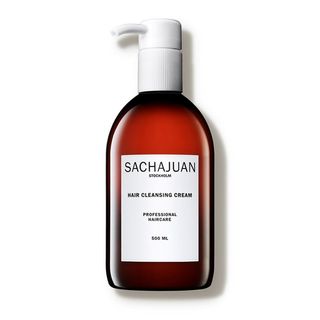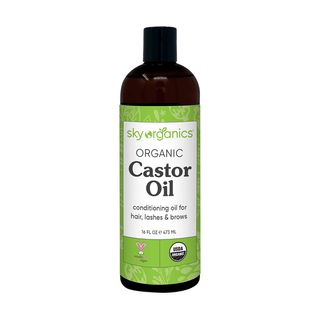How to Know If You Have Low-Porosity Hair (and the 12 Products That Can Help)

Hair is a complicated topic. It seems like after decades of categorizing hair as simply curly, coily, or straight, there are suddenly endless categories and subcategories measuring everything from thickness to ultra-specific growth patterns. Perhaps the most elusive of all these typing mechanisms is hair porosity. Specifically, low porosity is such a mystery.
If you've heard this term before but aren't quite sure what it means, you aren't alone! Discussions of hair porosity, in general, have become more prevalent in the curly and natural hair communities, so if you aren't regularly scouting out information in that pocket of the haircare conversation, there's a good chance you just haven't come across this term. Trust us—this is information everyone can use! Ahead, we've put together a crash course on all things low-porosity hair, including the best products to care for it. Keep scrolling for the expert intel.
First of All, What Is Hair Porosity?
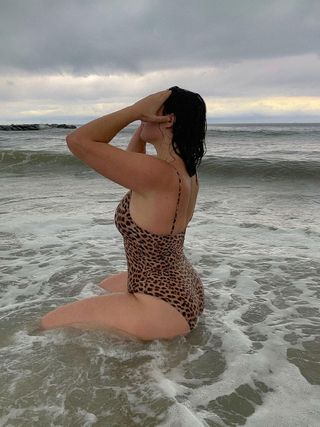
"Hair porosity determines your hair’s ability to absorb and retain moisture, as well as how oils pass in and out of the hair's cuticle," explains hairstylist and color expert, Sharon Spellman. "Essentially, the higher the porosity is, the more exposed your hair becomes." Celebrity hairstylist Christin Brown agrees, adding that porosity also has a lot to do with how well moisture is able to enter and remain inside the hair shaft. As for the levels of hair porosity, there are three that are widely acknowledged: low, normal, and high porosity. "In a nutshell, hair porosity is the hair's ability to retain and accept moisture. Most folks in the natural hair community find this information useful when it comes to selecting the right products to help with benefits toward the hair's state," she says. Though talk of hair porosity is most common in the naturally curly and coily hair communities, Spellman says that everyone's hair, independent of hair type or curl pattern, can fall anywhere on the hair porosity spectrum.
So, What Is Low-Porosity Hair?
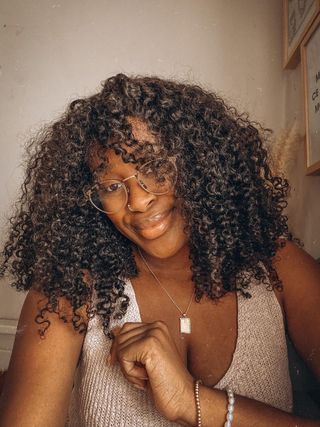
Low-porosity hair, or hair that is the least porous compared to normal and high porosity hair types, has strong bonds that are tightly closed and lay flat. "Low-porosity hair doesn't absorb or retain moisture well at all. When your cuticle is tightly packed together it creates no space between the cuticles, which makes it difficult to retain all that your hair requires," says Spellman.
Though the inability to accept and retain moisture sounds like a bad thing, low porosity isn't necessarily a bath thing. According to Brown, low porosity is often a sign of having extremely healthy hair or hair that hasn't been compromised by chemical treatments that could have broken down the hair bonds. On the other hand, low porosity can also be the result of intense product buildup that's acting as a kind of temporary shield between the hair and outside elements—even beneficial ones. "Your hair isn't able to accept additional hydration and can be more prone to dryness. This isn't true for all people, but for those who are experiencing these situations, it can be frustrating. For folks who have low-porosity hair, I actually bend the rules and tell them to cleanse their hair in hot water to help open up the hair cuticle which can be extremely helpful," Brown told us.

Spellman points out that due to its closed bonds that aren't as receptive to penetration from the outside, low-porosity hair can be challenging when it comes to drying it, coaxing it into retaining moisture, and even taking chemical processing like color. But, again, there are some major benefits as well. "On the flip side, people with low-porosity hair typically have glossier, less frizzy hair," she says. Similarly, Brown points out that, with proper care, low-porosity hair can generally hold color for much longer than hair with varying levels of porosity.
How to Tell If You Have Low-Porosity Hair
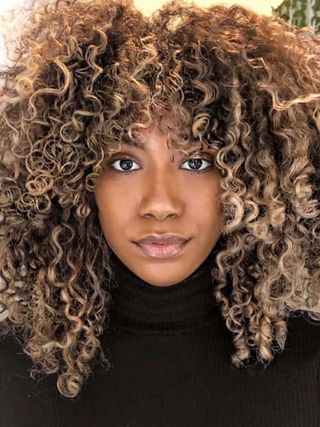
As mentioned above, there are some tell-tale signs that can help you determine whether or not you have low-porosity hair. For starters, Brown says to pay attention to how long it takes for your hair to become fully wet in the shower and how long it stays damp when products are applied. "When someone has low porosity, their hair may take longer to get wet in the shower, may repel water, and also not accept products easily," she explains. More signs of low porosity are intense product buildup resulting from products sitting on the surface instead of sinking in and excessive dry times after washing.
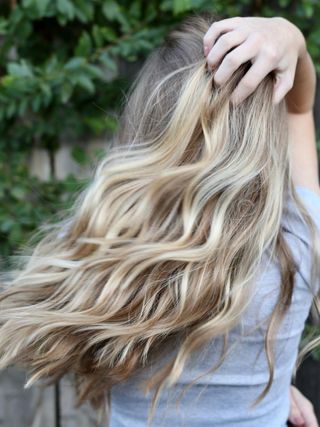
There's another, more empirical way to tell if you have low-porosity hair, though. It's actually a test you conduct at home in just a few minutes. "All you need is a clean glass of water and a strand of hair. Place one strand of your hair into the water and watch if it sinks or floats. If your hair floats, it's low porosity. If the strand floats then begins to sink slowly, that's considered normal porosity. Lastly, if your hair sinks immediately, it's high porosity," says Spellman. This test can yield accurate results, but Brown warns to make sure you're testing a clean strand of hair. "Sometimes it has more to do with whether your hair has product buildup when the test is performed, which can give you a skewed result," she clarifies.
Expert-Approved Product Swaps for Low-Porosity Hair

Instead of Protein Treatments…
Try Deep Conditioning Tools

Protein treatments are typically used for hair strengthening and widely beloved for restoring damaged hair, but Brown says that using them on low-porosity hair can actually lead to dryness and brittle hair. Instead, she recommends focusing on getting moisture and nourishing ingredients to actually penetrate the hair shaft. "Steaming can help open up the hair cuticle and allow for moisture to penetrate easier," says Brown.
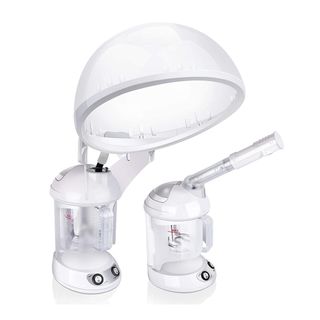
If you prefer a hands-free option, this one gets rave reviews. It comes complete with a hood attachment for your hair and a smaller attachment meant to steam your face. Genius.
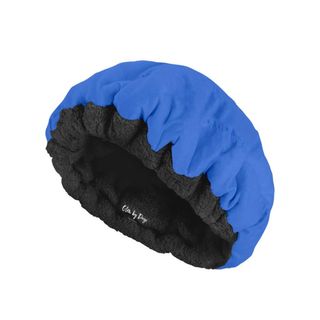
In case you're not quite ready to invest in a steaming apparatus, this thermal heat cap can help. Just pop it in the microwave to warm up and place it over your hair while it's saturated in your favorite conditioner.
Instead of Thick Creams…
Try Penetrative Moisturizers
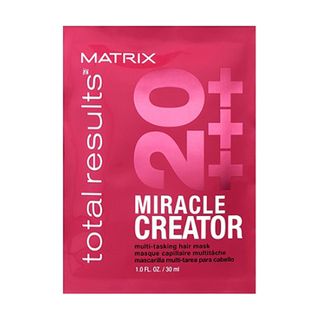
Since products aren't able to penetrate low-porosity hair well, using super-thick formulations can lead to product buildup that weighs down the strands. Instead, Spellmanrecommends reaching for conditioner and multitasking products with penetrative qualities, like this hair mask by Matrix. "The product provides the hair with penetrative moisture that also protects from future breakage," she explains.
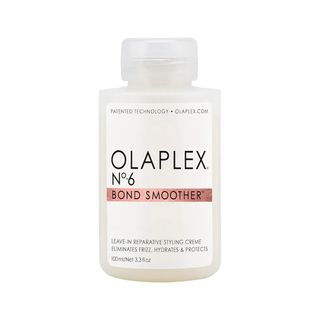
"This is one of my go-to products because of the creamy consistency and repair factor of the patented bond-building technology," says Brown.
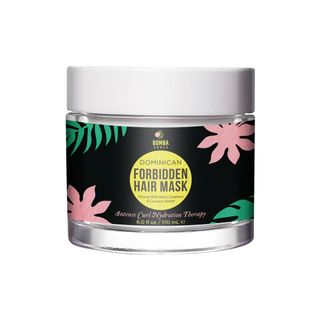
This natural treatment is perfect for curly hair types seeking intense moisture without weighing the hair down. It's infused with cinnamon, pistachio oil, and cupuacu butter to deeply penetrate the hair shaft and impart intense nourishment.
Instead of Cream Cleansers…
Try Clarifying Shampoos
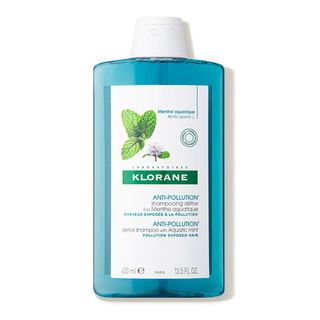
Excess product build-up is a unique challenge faced by those with low-porosity hair, so a good clarifying shampoo is a must for loosening oil and debris to give the good stuff a fighting chance at penetrating the layers of the hair shaft. Proceed with caution, though: Since moisture levels in low-porosity hair also tend to be a challenge, you don't want to strip the hair too much.
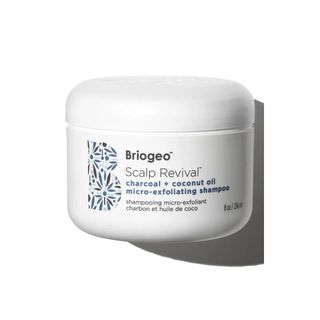
This isn't your average clarifying shampoo, but it's perfect for drawing impurities out of the hair and scalp. It's charcoal and coconut oil-infused with vegetable-derived micro-exfoliators that gently scrub away dry skin and debris.
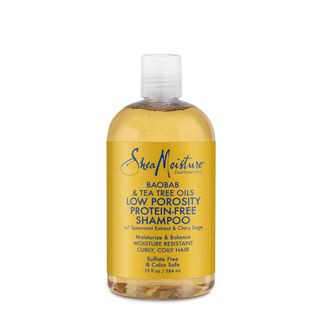
This shampoo is formulated specifically for low-porosity hair that resists essential moisture. It deeply cleanses with baobab and tea tree oil to both nourish the hair and loosen up buildup that can further block the penetration of essential nutrients.
Instead of Heavy Oils…
Try Water-Based Stylers and Lightweight Oils
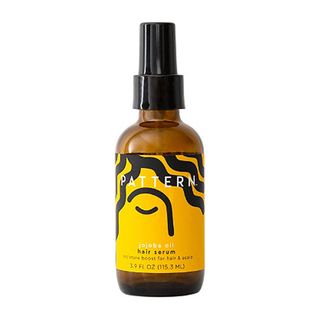
Heavy oils and low-porosity hair just don't mix. By coating the hair with heavy oils that coat the strands, you'll create even more of a barrier between the deeper layers of your hair and the essential hydration it needs. Instead, opt for lightweight oils that smooth and seal the strands without building-up on top of the hair after using water-based stylers that can better absorb into the hair.
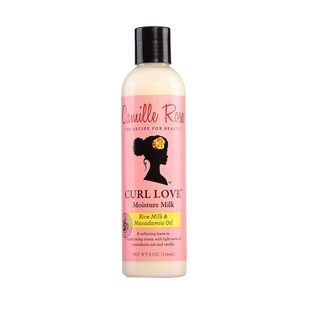
This hydrating rice milk formula is infused with avocado, castor, and macadamia oils along with rose hips, aloe, and green tea extract that can be used daily.
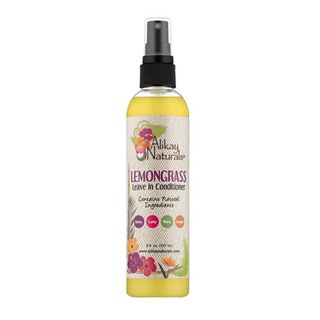
This lightweight leave-in strengthens the hair and promotes growth without leaving the hair feeling overly oily.
Next: ICYWW: These Are the Only Diffusers A-List Hairstylists Use on Their Clients
Courtney Higgs is a Cancer sun, Libra rising beauty enthusiast with about six years of experience in the editorial space. She was previously Who What Wear's associate beauty editor after spending many years working on the West Coast edit team at InStyle Magazine. She graduated from California State University, Northridge, with a BA in communication studies and pivoted to editorial after spending her college years working in the legal field. Her beauty philosophy is simple: She believes there are no wrong answers and that discovering our favorite beauty products and rituals is a journey, not a sprint. When she's not geeking out over products, she can be found adventuring around L.A. with her fiancé; watching reality TV with their French bulldog, Bernie Mac; or relating way too hard to astrology memes.
